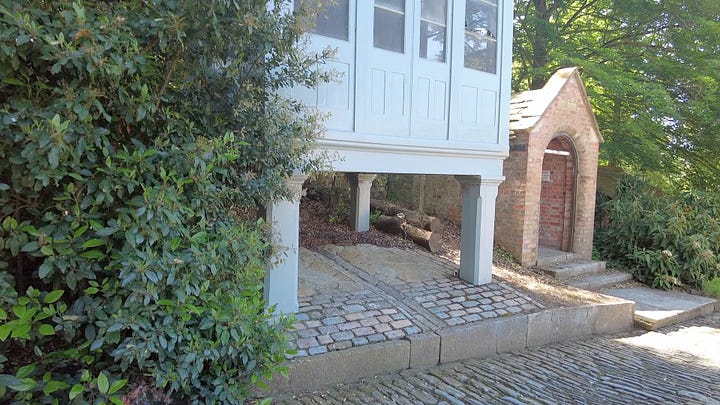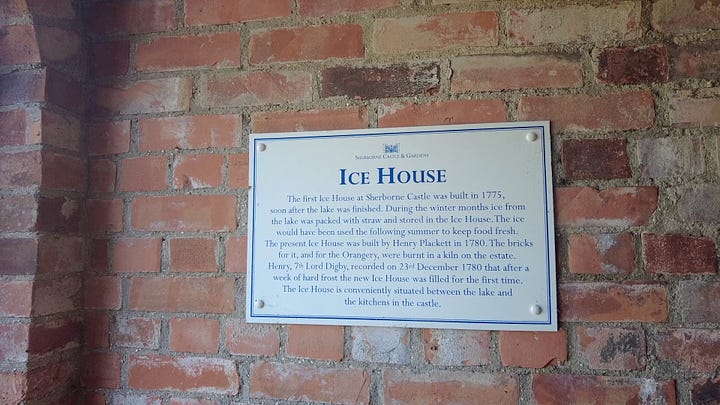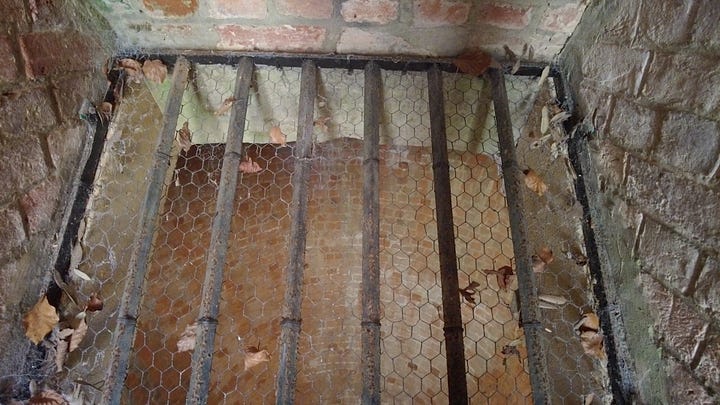
In my previous article, I described my visit to Sherborne Old Castle (see the link at the end of the page). The history of that castle from the time of Sir Walter Raleigh is linked to the ‘new’ Sherborne Castle and Gardens. Please keep in mind that though it’s called a castle, it hasn’t been designed as a fortified building. Castles became of little use once the armed forces used gunpowder. The rich moved from building castles to what today we in the UK call stately homes.
Sherborne Castle and Gardens
I have driven past the entrance to Sherborne Castle and Gardens entrance a couple of times, and that’s how I knew about it. The property is privately owned, although members of English Heritage get a discount on the entry fee. Entry to the Castle is an additional cost to the gardens and is viewed with a tour guide at set times. This is very much a home; therefore, visitors can’t just wander around.


The family living here have done so since 1617, when John Digby acquired it. Sir Walter Raleigh built the house in 1592 after realising the expense required to fully modernise Sherborne Old Castle. In 1600 he added turrets to the four corners. Raleigh regarded the house as Sherborne Lodge, and it only took on the name Sherborne New Castle after the original castle was destroyed in the attack by the Parliamentarians during the English Civil War.
Sir Walter had his properties confiscated by the crown in 1616 after his men attacked the Spanish outpost of San Thomé during his failed attempt to find Eldorado. This action resulted in not only the loss of his properties but also his life by beheading.
I would like to invite you to join Roland’s Travels Facebook Group. Come and ‘hang out’ with fellow readers. Request to join here.
Having parked the car and then paid my entrance fee, there is a pleasant walk past the stables, now used as Sherborne Estate offices. I next pass the bottom end of the lake until reaching the gently rising ground leading to the front of the house and the starting point for the inside tour.
On the tour of the house, our guide did an excellent job of telling the group more about Sir Walter Raleigh and what he had built. Photography is prohibited in the house, so I cannot add any internal photos for you. If you can visit, please ensure you book a tour, as this really is a beautiful house. The rooms are lived in by the Wingfield-Digby family, and little touches like an opened book resting on a sofa ready to be resumed are evident.
Sir John Digby added four wings to the house to produce the H-shape we see today. He also added hexagonal towers at the end of each wing.
One notable visitor was William of Orange, who invaded England in 1688. He landed at Brixham, Devon, on November 5th. He came to Sherborne Castle and proclaimed himself King of England.
During the next century, later generations of the family made improvements and added such features as Georgian windows and marble fireplaces. In 1787, on the west side of the house, an extension was added. This provided more bedrooms and improved the staff accommodations and kitchens.
The Digby’s also purchased very fine furniture to furnish the many rooms. It’s lovely to see these things very much in use today and for them not to be seen as museum pieces.
The beautiful gardens and lake are the work of the legendary Capability Brown. In 1753, Brown was commissioned to create the lake. It is a sizeable body of water, covering fifty acres and is eleven feet deep in the middle. It is run by Sherborne and Yeovil Angling Association. The anglers must really enjoy the environment when fishing here. On the house tour, the guide pointed out that some unscrupulous person had released a terrapin into the lake, and it is happily eating the baby birds. I hope that, at some point, this unwanted creature can be captured and removed from the lake.
Capability Brown was invited back to landscape the gardens which he created between 1787 and 1789. Brown has made a lasting legacy, for the gardens are truly outstanding. I hope the photos do the gardens justice, although there is no substitute for visiting in person. Click on the photos to enlarge.
Sherborne Castle and Gardens Photos





There are several routes you can take to walk around the gardens. Allow plenty of time on your visit. It’s easy to need most of the day to take it all in. The walks alone will take you a couple of hours if you go at a fair pace. I would prefer to take it more leisurely and enjoy the variety of views, plants and features built.
There is a museum, which, if you tour the house, you will exit through. However, it is open to those who don’t tour the house. Close to this is the ice house and a couple of game larders set around the herb garden.

Click on each photograph to enlarge.




Next to the museum is the Old Dairy which contains a surprise. There is a Roman mosaic floor which is exposed in certain areas beneath the protective floorboards. The mosaic was not found here; it was brought from Lenthay on the west side of Sherborne in 1834 to use as a floor in the Old Dairy. Archaeologists today will shudder at just the thought of this action. The dairy was built in 1753 to produce butter and cheese for the house.


Having looked around this area close to the house, it’s now time to walk around the lakeside paths. There are two recommended routes on the map of the gardens. One walk is 1.6km, and the other 2.1 km. Due to the available time, I took the 2.1 km walk, which looked the most interesting. This walk is called Fossil House and Pleasure Grounds Walk on the map. On this route, you will see Raleigh’s Seat, Pope’s Seat, The Cascade, The Fossil House and The Folly, amongst other interesting features.
Sir Walter Raleigh’s Seat
Raleigh’s Seat is a vantage point that overlooks what was once a main route to Sherborne. Sir Walter would sit and watch the comings and goings on the road below while he had some quiet time.
Pope’s seat is named after the poet, Alexander Pope and not the head of the Roman Catholic Church. In 1724, the poet visited Sherborne New Castle and was so impressed that he wrote a long description. Now this was before Capability Brown did his work. Pope never sat here, for the building was not erected until 1778, and he died in 1744.



I can imagine that the gardens will look different throughout the seasons and, in the autumn, will take on a wonderful glow of colours as the leaves change and the trees put on their autumn clothes.
I immensely enjoyed my visit to Sherborne Castle and Gardens and have no hesitation in recommending you visit. As I mentioned earlier, please allow enough time to take it all in and enjoy the walks and tour of the house. It’s very worthwhile. There is plenty of space to sit and have a picnic, with seats and tables. Also, there is a garden centre owned by the estate with a cafe. Visitors are given a 10% discount voucher to use.
Thank you for reading, and if you’re not a free subscriber, please use the link below.
Here’s the link to my previous article, Sherborne Old Castle.
Sherborne Old Castle
The United Kingdom once had thousands of castles across its lands. Today, many remain, some fully complete and others in ruins. Where am I visiting today? It’s a beautiful June day, and the sun is shining on Sherborne Old Castle. As in my previous castle s…






